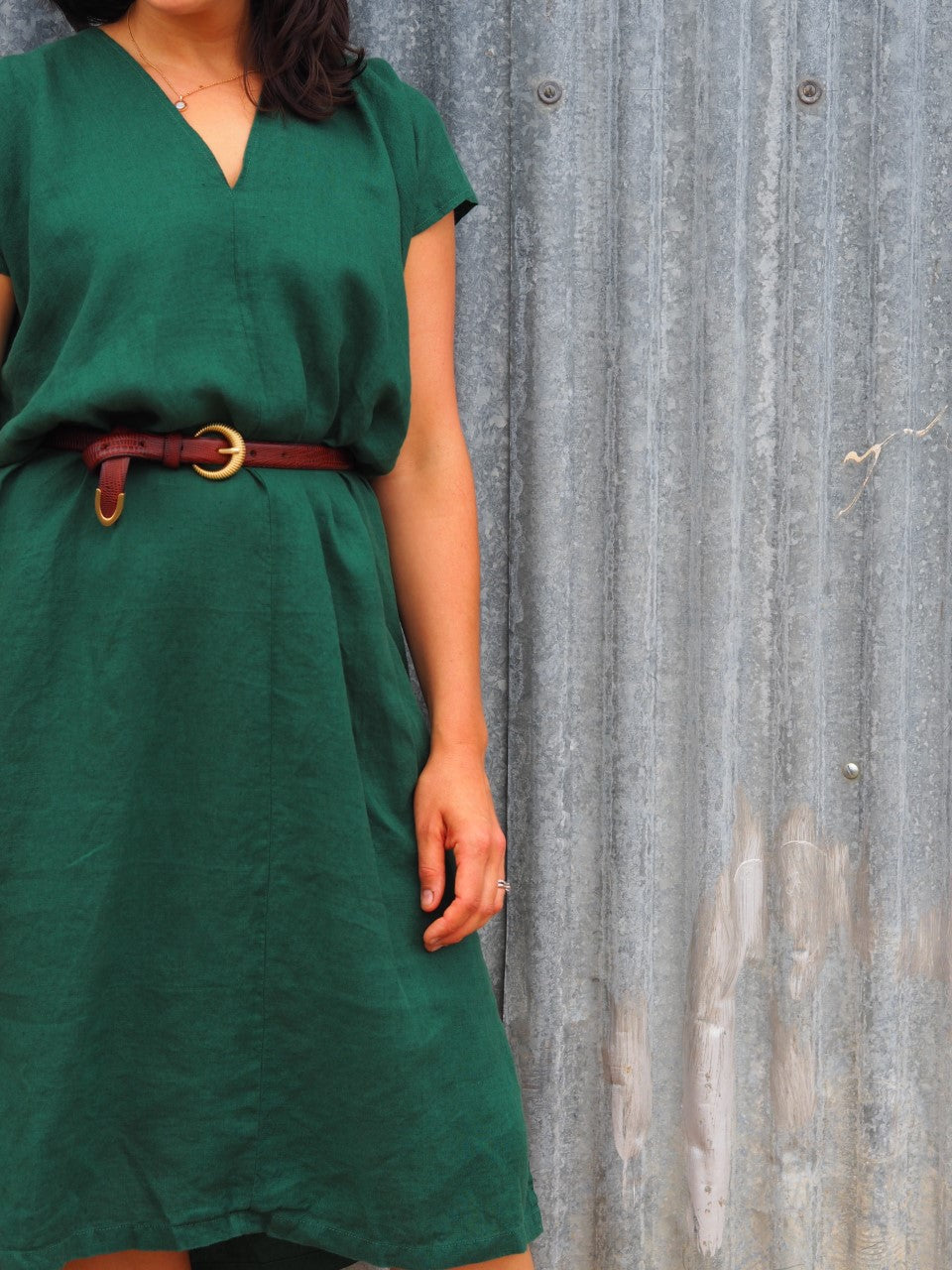Article: Fabric Care Guide for Linen - How to wash, dry and store your linen garments

Fabric Care Guide for Linen - How to wash, dry and store your linen garments
Why we specialise in selling and creating linen garments
As a regional based store, linen is at the heart of our business. We are not just wearing and selling it, we are also sourcing, designing and creating with it for our own inhouse label Somebody's Story. We thoughtfully source linen from around the world; from fine French and Polish linen dresses to linen shirts and tops to the more rustic weaves of stone washed Italian linen. With this industry background we thought it was time to pass on the following tips about washing & caring for your linen garments to ensure they last as lifetime, just as they're designed to do.
The natural properties of linen
As a natural fabric, linen fibres are large, wide and hollow with a loose weave that allows for generous air circulation. This in turn keeps you cool and rather than clinging to your skin as many synthetic fibres do, the structure of linen means it will sit away from your skin, keeping you cool in even the warmest of weather.
Amazingly it also has the ability to both conduct & reflect heat, drawing it away from your body and into the fibres of the linen itself. It's heat conductivity has been found to be five times higher than that of wool and eighteen times higher than silk.
Linen can absorb up to 20% of it's weight in moisture before it even begins to feel wet and it's innate wicking ability means that by the time the fabric begins to feel damp, much of the moisture would have already evaporated making it perfect for wear in humid climates.
We also love linen for its lived-in feel, it gets softer and cosier with every wash. If looked after well, linen truly can last you a lifetime.
Our Tips For Washing, Drying And Storage
We are here to give you our expert tips for caring for your linen clothing. The following is a quick guide to washing, drying and storing your linen garments correctly to ensure they last the distance.
Washing And Drying Linen
Linen is a fabric that actually gets softer and more lustrous the more it's washed. This is because the flax fibres are stronger when wet than dry and they become softer and more pliable the more they are washed.
-
To keep the colour of your linen as fresh as the day you bought it, hand wash (or use a delicates cycle if you must machine wash) in lukewarm or cold water using a mild soap or gentle detergent. If in doubt, be sure to read the care instructions label before washing your linen.
-
Linen is highly absorbent, we recommend washing it separately from other fabrics.
-
It is best to dry naturally in a shady spot and we often use a coat hanger to dry our linen garments to avoid peg marks.
-
We recommend not using a dryer however if it is a must, use a tumble dryer on a low setting (ensure it’s not HOT). Do not dry-clean as the process weakens the fibres and will shorten the life of your garment.
-
It's important not to use harsh detergents or bleaches as this can leave marks and destroy the dyes of your clothing.
Ironing
Gone are the days of starched pressed linen. In general, modern linen garments are supposed to have a relaxed and lived in feel and look - so celebrate the fact that you don’t need to iron. But if you can’t get on board with this and prefer to iron, we recommend to do the following:
-
Turn the garment inside-out and run your iron across whilst the linen is still a little bit damp – best results, guaranteed!
-
Extra wrinkles? Lay a damp, light-colored cloth over your linen and run a warm iron on the steam setting across it.
Storing your linen
-
For everyday storage, linen will hold its shape on coat hangers in your wardrobe, no special care is required. Although do remember to keep your garments away from sharp objects such as metal zips and buckles, necklaces etc.
-
Being a biodegradable material, be sure to so keep in mind dampness and air circulation when considering storage options for both every day storage in your wardrobe and seasonal storage.
-
At the end of a season, store clean linen in a cool, dry place. Try to store your favorite pieces as flat as possible to avoid excess wrinkling and creasing.
Why you should avoid storing linen folded long term? You should be aware that constant creasing in the same areas can lead to weakening in the fibres which in turn could lead to tears in the material and colour fading.
General care when wearing linen
-
Avoid direct contact with cosmetics or skincare products as this might stain or leave marks.
-
As mentioned above, avoid contact with sharp objects such as jewellery, zips and buckles and these will easily catch on the wide weave of the linen.
Sustainability of linen
Flax is a resilient crop and can grow in poor soil, using far less water and pesticides than cotton across it's production lifecycle. For example a linen shirt uses 6.4 liters of water to produce compared to 2,700 liters of water for a cotton shirt. A linen garment on average should easily last three decades if cared for correctly and we see that that fact alone makes linen a sustainable choice. Our ethos is to consume less and chose wisely.

